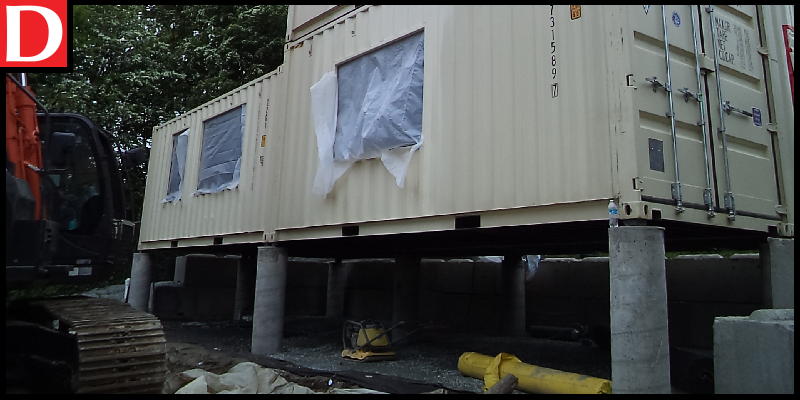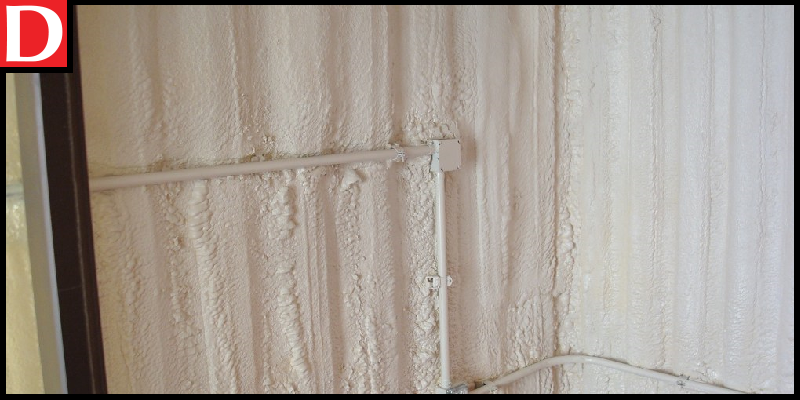 Owner
Owner

Are you considering building a Container home? At Drybox, we believe in showing the challenges of building a container home early on. We also provide a strategy to help you present your project to local planning departments and earn their trust.
We strongly suggest that anyone using a valuable container structure for people should design and permit it properly. This helps protect your investment.
We recommend that designers fully permit any valuable container structure. This will help protect your investment.
As traditional housing costs rise, many Americans can no longer afford a traditional home. They are turning to tiny homes as a new way to reach the American dream.
Financing your custom container home as your primary residence is possible. However, it may be more challenging when compared to financing a traditional home. If you choose to build the container home as an Accessory Dwelling Unit (ADU), financing may be even easier. With an ADU, if you already own your property, you can tap into your home’s equity to finance it.
If you find a bank that offers a traditional mortgage, they may have extra requirements. For example, you must build your dream home on a permanent foundation and ensure it meets standard housing codes.
With an ADU you can potentially tap into a specialized ADU loan. Certain financial institutions, such as Freddie Mac, now provide specialized financing options for Accessory Dwelling Units (ADUs).
Before going too deep into the details you should see if local laws allow you to have shipping container homes. While most U.S. states allow shipping container homes, some counties, and even cities may have specific requirements.
Before you go to the permitting office, you can pay to have renderings of your container home made up. You can hire a professional to do it. You can also try it yourself, with one of the many free and paid software programs available.
The average container sizes used for container homes are 8×20 and 8×40. To deliver a 20ft container, you need at least 70 feet of straight space. For a 40ft container, you will need 120 feet of straight space.
The cost of a shipping container depends on its age, size, and condition. On average a new one-trip (also called a one tripper), typically ranges from $2,800 to $7,000.
If you intend to make an online purchase, exercise caution. Shipping container scams are becoming more common. This is especially true with the growing demand for containers.
Scammers often pose as legitimate leasing or selling companies, using various tactics to deceive buyers. Research the container company thoroughly before making a purchase. Scammers are extremely active on Facebook Marketplace, which has become a popular place for various types of fraud.
Buying from a brick-and-mortar container company can offer more security. This method allows you to inspect the container in-person before purchasing. This will also allow you to get a feel for how compact your future living space will be. Many tiny and container home buyers have a hard time visualizing just how much space they’re giving up, until they see it in person.
Just like with a traditional stick-built home, maintenance plays a crucial role in how long your home lasts. Because manufacturers make shipping containers from steel, they can rust over time. On average a shipping container house should last approximately 25 years.
The most popular shipping container sizes for container homes are 20- and 40-feet. Shipping containers are 8 feet wide and come in two heights. Standard, which measures 8′ 6″, and High Cube, which measures 9′ 6″.
A 40-foot container will have approximately 300 square feet of internal space before framing. A 20-foot container has approximately 146 square feet of floor space. When framing with 2x4s, your internal width will decrease by about 8 inches, which will impact the overall living space. Your internal height will also decrease by 4 inches.
Knowing the different grades of shipping containers is important when buying one for a container home. This choice affects the quality, safety, and lifespan of your project.
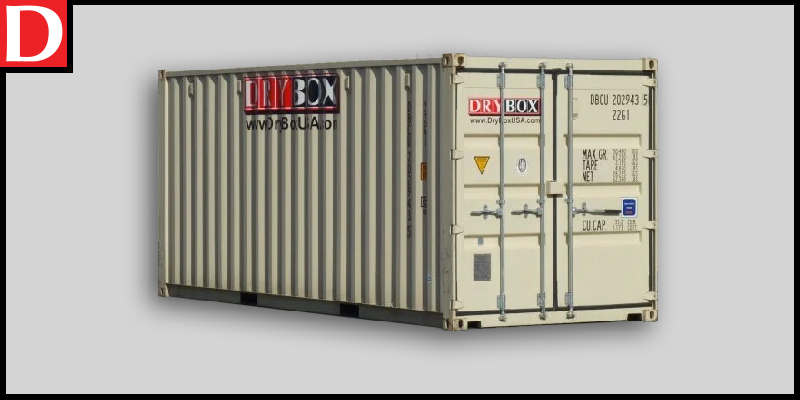
This is the best possible container. They call them ‘1-Trip’ because the shipping container makes a single journey across the ocean from China. These units show minimal signs of wear and tear, though occasional dings, dents, and scuff marks from handling are present. At Dry Box, we recommend using these if you will build a shipping container home.
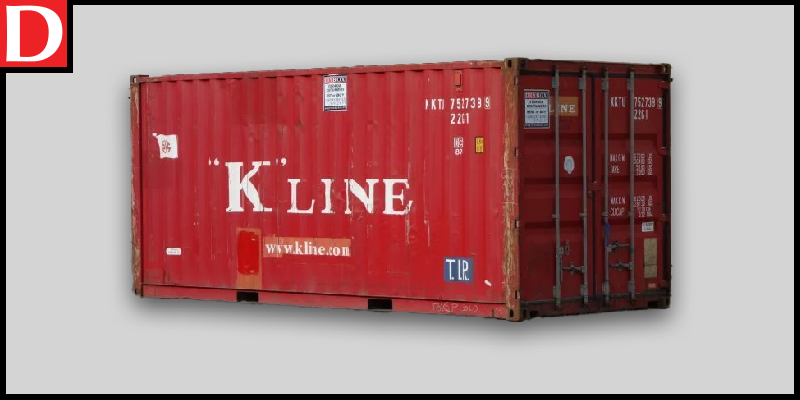
These containers usually range from 10 to 16 years old and have retired because of age, not structural defects.
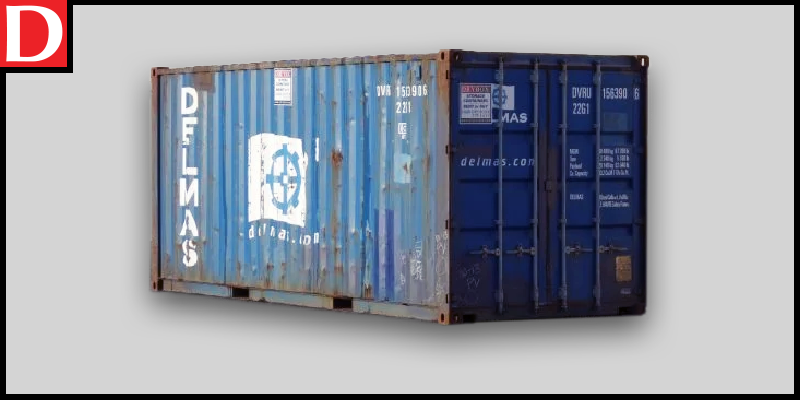
Wind and watertight containers are the cheapest used containers that don’t leak. They are typically older and may have structural defects that prevent them from passing a marine survey.
The foundation you choose will depend on many factors, including local building codes. However, a concrete slab foundation is usually the best option.
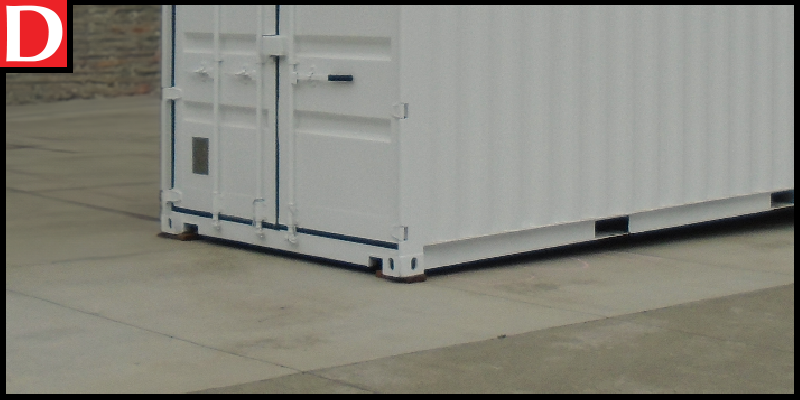
One significant advantage of a concrete slab foundation for a container house is that it removes empty spaces underneath. This effectively prevents animals from entering the structure.
A disadvantage of a concrete slab is you cannot access the utilities under it. This means that to replace plumbing or electrical systems, you must lift the container house. You will then cut into the foundation, replace the utilities, and re-pour the concrete.
They cast pile foundations in thick cardboard tubes buried deep into the ground. Pile foundations are a perfect solution when you have a site with difficult terrain. They can withstand an immense amount of pressure and weight, making them ideal for multi-level container houses.
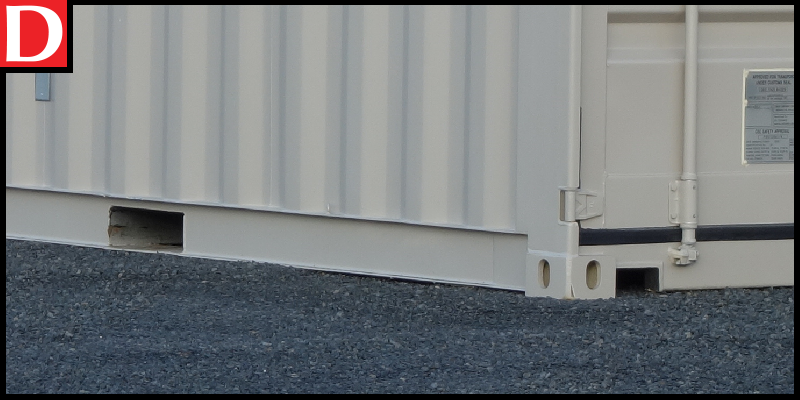
This type of foundation uses multiple layers of compacted gravel at least 12 inches this. People often choose a gravel foundation for storage containers that don’t require frequent access. Gravel can settle and shift over time and requires regular maintenance. This also means you will have to re-level your container home from time-to-time.
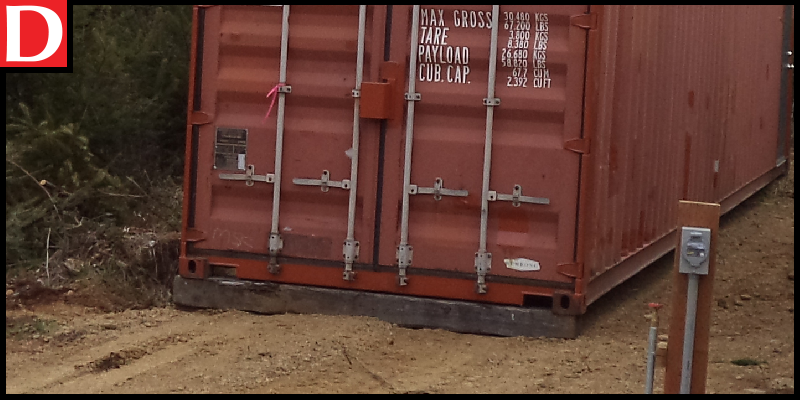
Railroad ties are affordable and strong. They can hold a lot of weight, which makes them great for supporting a shipping container. Despite their durability and protective coating railroad ties will also rot over time when exposed to prolonged moisture. Additionally, if not placed on a solid foundation they sink into the ground under the weight of the container.
We advise against using a railroad tie for your container house foundation.
The three most popular ways to insulate a container house are with fiberglass, polystyrene panels, or spray foam. In a shipping container home space can come at a premium. Not only should you consider space lost by insulation, but also well the insulation will act to keep heat in during the colder months.
When insulating a container home, you want to choose one with a high R-Value. R-Value is a measure of insulation’s ability to resist heat traveling through it. The higher the R-Value for your insulation has the better it will hold heat in the winter months.
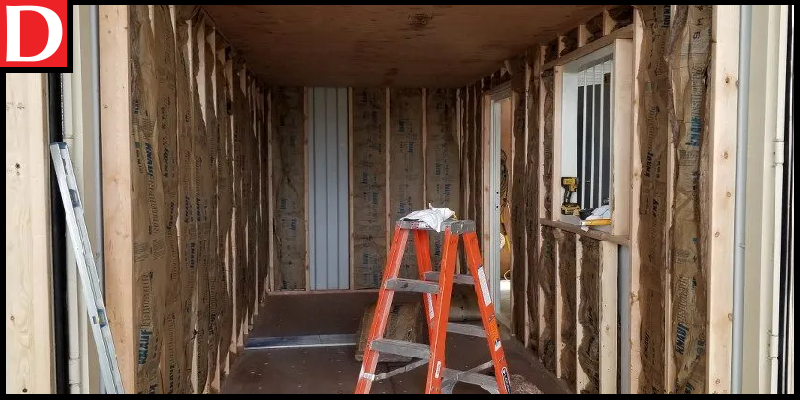
Fiberglass insulation is a popular choice for those looking to save money. Fiberglass insulation has a lower R-value ranging from R3-R4 per-inch of thickness. While fiberglass insulation is easy to install, compared to other insulation types, it does use more space.
Something to consider with choosing fiberglass is when combined with a vapor barrier and sheet rock, the walls won’t be able to breath. When the walls of the container expand and contract, moisture can build up, leading to mold and mildew. With some people fiberglass insulation can also cause their skin to become irritated and also cause breathing problems.
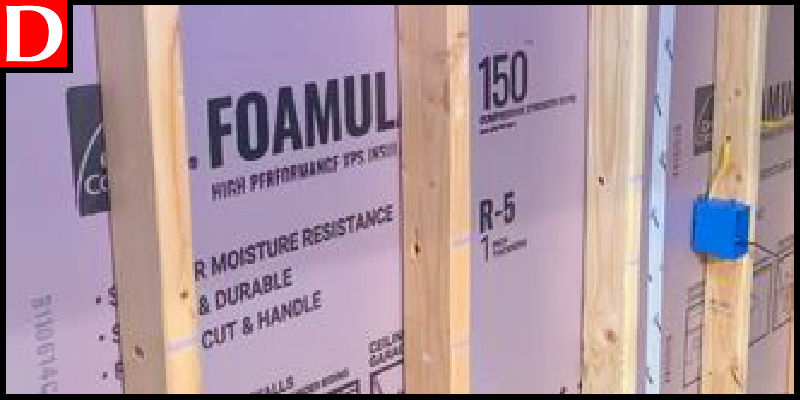
Another popular choice when you’re looking to save money are polystyrene panels. The R-Value for polystyrene panels depends on the type. Polystyrene panels come in two types: Expanded and Extruded.
Expanded Polystyrene will typically have an R-Value of R-4 per-inch. Extruded Polystyrene has an R-value of R-5 per-inch. Because the sheets of polystyrene are relatively thin, they will save space.
The panels are also easy to install making them attractive to DIYers and are also resistant to moisture. Keep in mind since polystyrene is flammable, you should take additional fireproofing measures.
Spray foam insulation is a chemical product that expands and then hardens on the surface. Spray foam insulation is the most expensive of the options discussed and may seem less appealing. The type of spray foam and the area you cover can affect the cost. Spray foam can be open-cell, allowing air and moisture through, or closed-cell, blocking both.
Throughout the industry, closed cell spray foam is the preferred method of insulating a shipping container. Spray foam lasts a long time, unlike fiberglass insulation that can break down over time. It also offers the highest R-value.
Yard Address
132 Estep Rd
Chehalis, WA 98532
Office: 360-262-1841 (Local)
Fax: 360-262-3139
Branch Manager, Kirk Vigre
[email protected]
Yard Address
2021 E Marc St
Tacoma, WA 98421
Cell: 206-339-8309
Office: 253-272-0902
Branch Manager, Aaron Norlin
[email protected]
Yard Address
10400 N Burgard Way
Portland, OR 97203
Cell: 503-822-7550
Office: 503-946-9744
Branch Manager, Wayne Vigre
[email protected]
Yard Address
2820 W 500 S
Salt Lake City, UT 84104
Cell: 801-515-2875
Office: 801-505-0002
Branch Manager, Clarence Wright
[email protected]
Yard Address
8414 W Geiger Blvd
Spokane, WA 99224
Cell: 509-496-8704
Office: 509-606-2699
Branch Manager, Ryan Earle
[email protected]
Yard Address
421 Keys Rd.
Yakima, WA 98901
Office: 360-669-3047
Branch Manager, Dan Long
[email protected]
